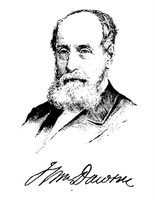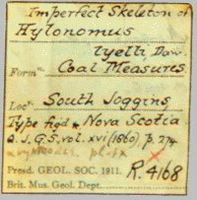Resolving the long-standing enigmas of a giant ornithomimosaur Deinocheirus mirificus. 2014. Lee, Y.-N., et al. Science.
a, MPC-D 100/127. b, MPC-D 100/128. c, Composite reconstruction of MPC-D 100/127 with a simple proportional enlargement of MPC-D 100/128.
Abstract: The holotype of
Deinocheirus mirificus was collected by the 1965 Polish–Mongolian Palaeontological Expedition at Altan Uul III in the southern Gobi of Mongolia. Because the holotype consists mostly of giant forelimbs (2.4 m in length) with scapulocoracoids, for almost 50 years
Deinocheirus has remained one of the most mysterious dinosaurs. The mosaic of ornithomimosaur and non-ornithomimosaur characters in the holotype has made it difficult to resolve the phylogenetic status of
Deinocheirus.
Here we describe two new specimens of
Deinocheirus that were discovered in the Nemegt Formation of Altan Uul IV in 2006 and Bugiin Tsav in 2009. The Bugiin Tsav specimen (MPC-D 100/127) includes a left forelimb clearly identifiable as
Deinocheirus and is 6% longer than the holotype. The Altan Uul IV specimen (MPC-D 100/128) is approximately 74% the size of MPC-D 100/127.
Cladistic analysis indicates that Deinocheirus is the largest member of the Ornithomimosauria; however, it has many unique skeletal features unknown in other ornithomimosaurs, indicating that
Deinocheirus was a heavily built, non-cursorial animal with an elongate snout, a deep jaw, tall neural spines, a pygostyle, a U-shaped furcula, an expanded pelvis for strong muscle attachments, a relatively short hind limb and broad-tipped pedal unguals.
Ecomorphological features in the skull, more than a thousand gastroliths, and stomach contents (fish remains) suggest that
Deinocheirus was a megaomnivore that lived in mesic environments.






















